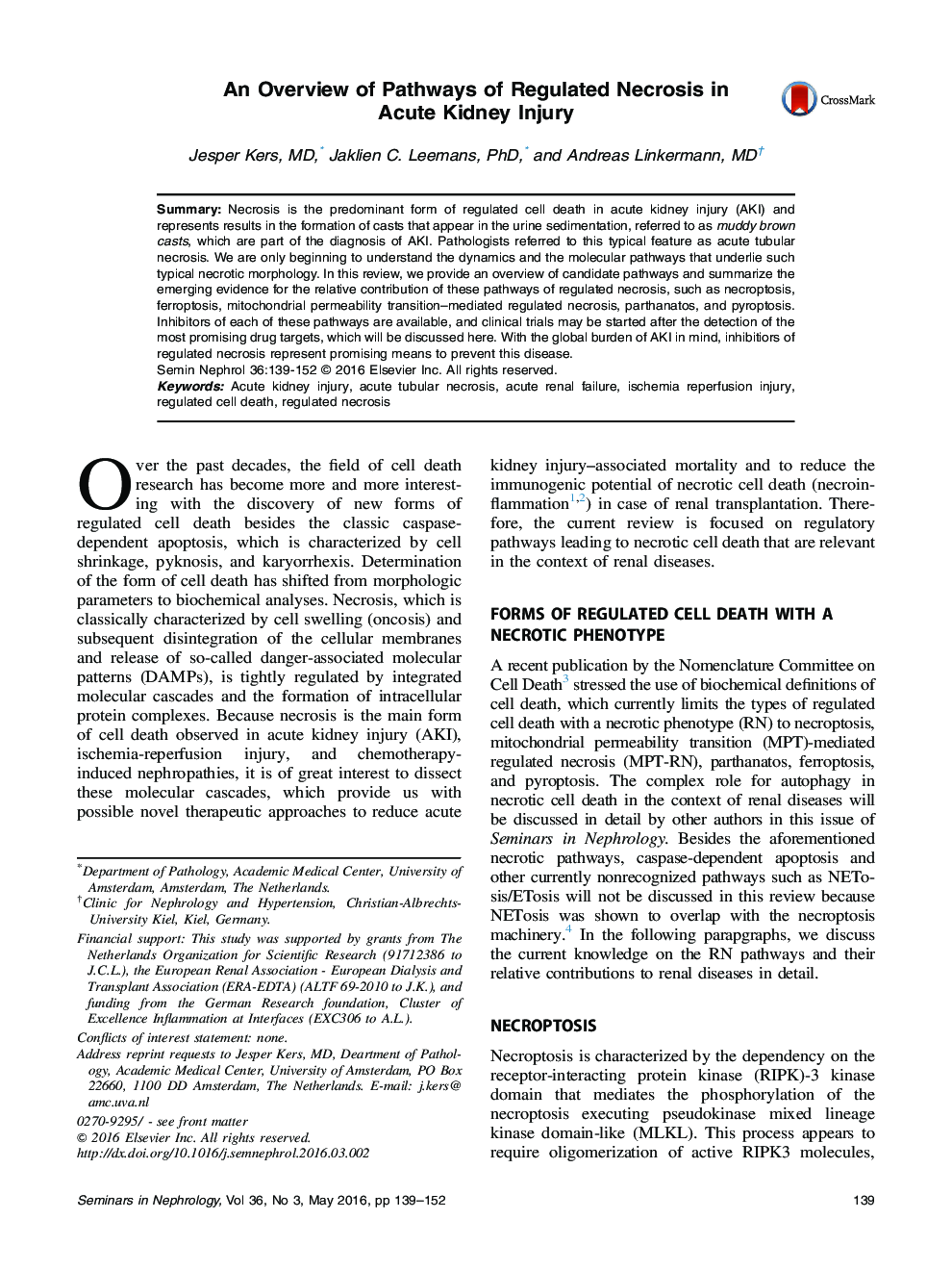| Article ID | Journal | Published Year | Pages | File Type |
|---|---|---|---|---|
| 3896225 | Seminars in Nephrology | 2016 | 14 Pages |
Abstract
Necrosis is the predominant form of regulated cell death in acute kidney injury (AKI) and represents results in the formation of casts that appear in the urine sedimentation, referred to as muddy brown casts, which are part of the diagnosis of AKI. Pathologists referred to this typical feature as acute tubular necrosis. We are only beginning to understand the dynamics and the molecular pathways that underlie such typical necrotic morphology. In this review, we provide an overview of candidate pathways and summarize the emerging evidence for the relative contribution of these pathways of regulated necrosis, such as necroptosis, ferroptosis, mitochondrial permeability transition-mediated regulated necrosis, parthanatos, and pyroptosis. Inhibitors of each of these pathways are available, and clinical trials may be started after the detection of the most promising drug targets, which will be discussed here. With the global burden of AKI in mind, inhibitiors of regulated necrosis represent promising means to prevent this disease.
Keywords
Related Topics
Health Sciences
Medicine and Dentistry
Nephrology
Authors
Jesper MD, Jaklien C. PhD, Andreas MD,
